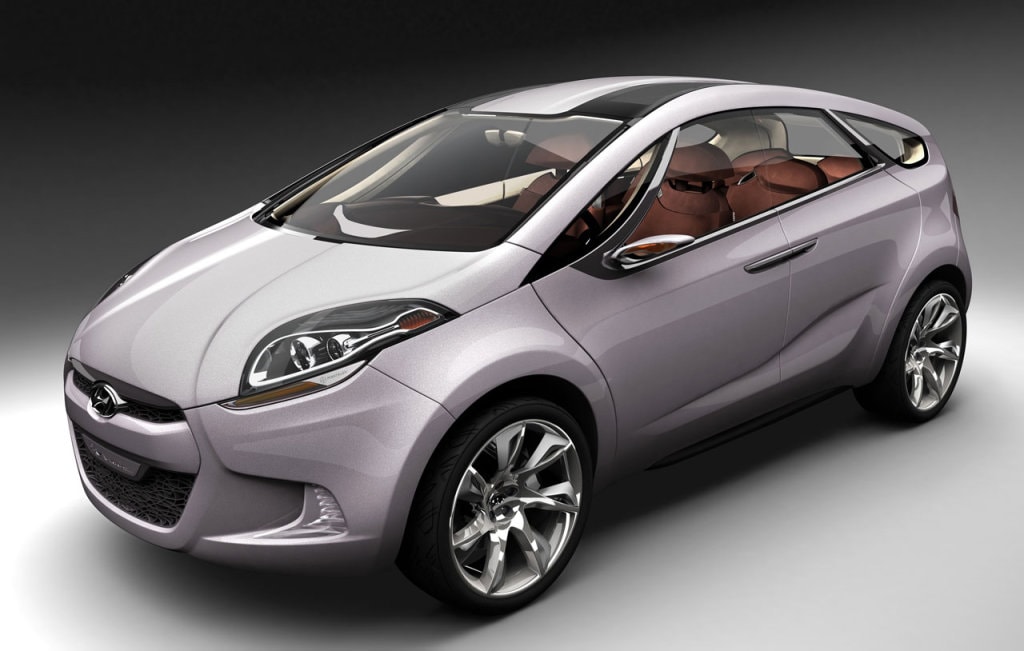Hyundai is planning to put into production, starting sometime in 2010, a new concept of car called a CUV. The model will feature a six seater mono cabin design, a unique swiveling seats concept, futuristic communications and an entertainment system. The HED-5 concept will also make the debut for Hyundai's new high performance turbocharged 2.0-liter, four cylinder engine with gasoline direct injection, producing 286 horsepower. Other details regarding the engine are still to be announced.
Named the Theta Turbo GDI, the powertrain uses a state of the art direct injection system which, by injecting precise quantity's of fuel directly into the cylinder is able to achieve great improvements in the performance and response of the engine, also due to the intake charge cooling that shortens the time needed to reach the maximum intake pressure. Fuel efficiency and exhaust emissions were also improved by the use of Continuously Variable Valve Timing combined with the direct injection system.
The HED-5 i-Mode will feature a new and unique Swivel Seat concept thanks to Hyundai's engineering partner, Keiper. The doors will also feature an innovative opening mechanism which enable them to be free from conventional inner and outer guide rails, therefore lacking the B-pillar and giving remarkable accessibility to the generous interior space.
The design concept of the interior projects an inviting landscape of mildly sculpted shapes and advanced technology. Engineers used soft, silky leather in warm brown tones providing an atmosphere normally seen in homes. One of the main highlights of the interior are the "floating" seats that provide first first class comfort with innovative functionality, creating a lounge atmosphere for the passengers.
As result of the cooperation with Bayer MaterialScience, which enabled the complex and radical design of the HED-5, materials used on the car are more flexible to use then the metal and glass that they replaced. The use of such materials created the possibility to obtain a light-weight body for the HED-5, therefore lowering the total mass of the car; yet another key fact in lowering the fuel consumption, acceleration time, and emissions.
Named the Theta Turbo GDI, the powertrain uses a state of the art direct injection system which, by injecting precise quantity's of fuel directly into the cylinder is able to achieve great improvements in the performance and response of the engine, also due to the intake charge cooling that shortens the time needed to reach the maximum intake pressure. Fuel efficiency and exhaust emissions were also improved by the use of Continuously Variable Valve Timing combined with the direct injection system.
The HED-5 i-Mode will feature a new and unique Swivel Seat concept thanks to Hyundai's engineering partner, Keiper. The doors will also feature an innovative opening mechanism which enable them to be free from conventional inner and outer guide rails, therefore lacking the B-pillar and giving remarkable accessibility to the generous interior space.
The design concept of the interior projects an inviting landscape of mildly sculpted shapes and advanced technology. Engineers used soft, silky leather in warm brown tones providing an atmosphere normally seen in homes. One of the main highlights of the interior are the "floating" seats that provide first first class comfort with innovative functionality, creating a lounge atmosphere for the passengers.
As result of the cooperation with Bayer MaterialScience, which enabled the complex and radical design of the HED-5, materials used on the car are more flexible to use then the metal and glass that they replaced. The use of such materials created the possibility to obtain a light-weight body for the HED-5, therefore lowering the total mass of the car; yet another key fact in lowering the fuel consumption, acceleration time, and emissions.


